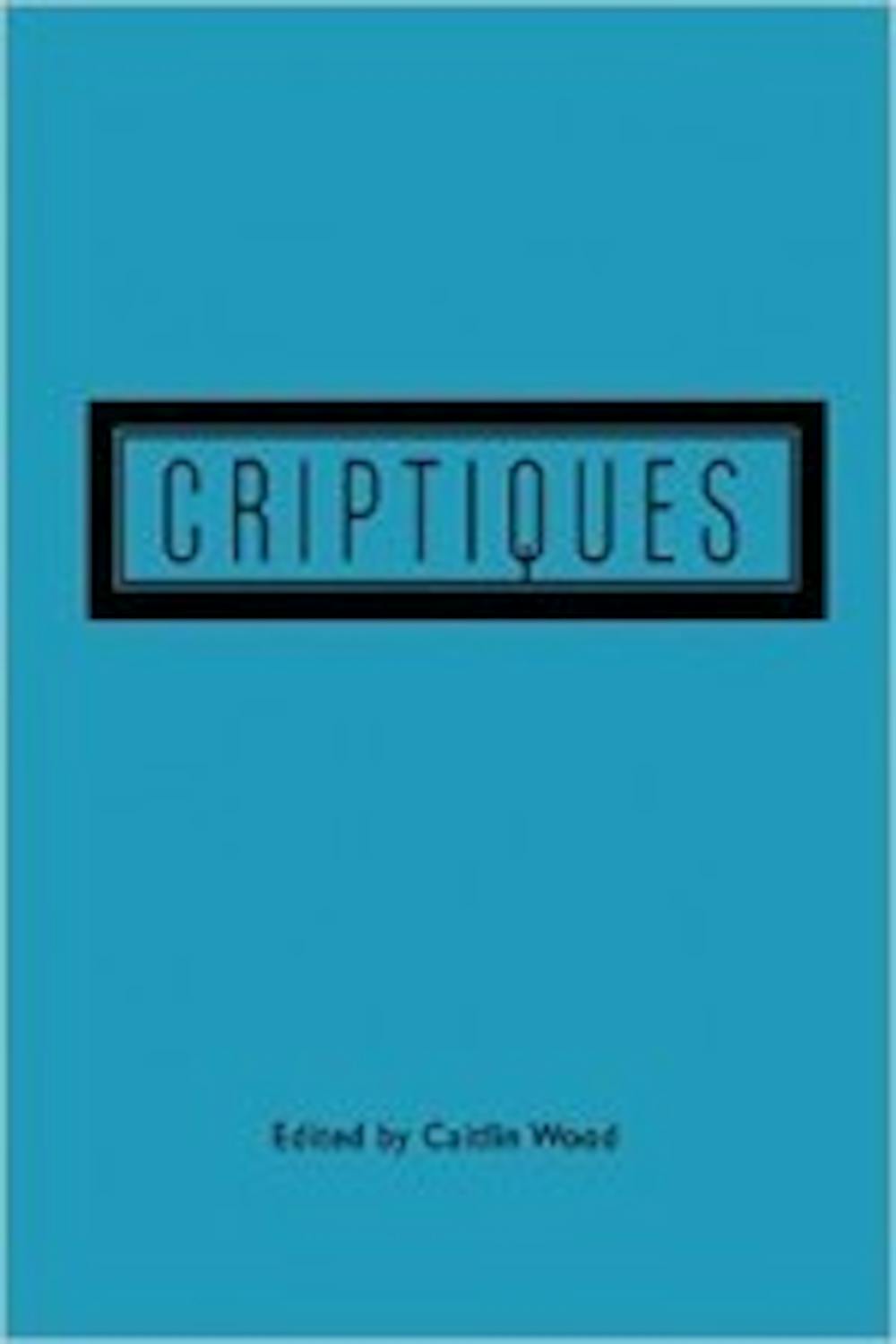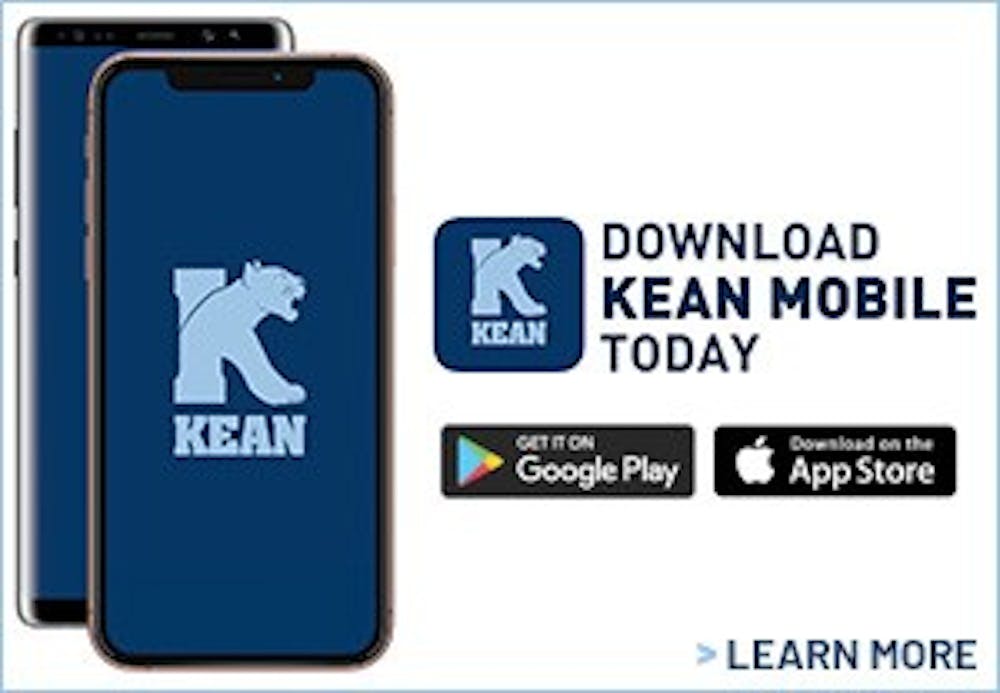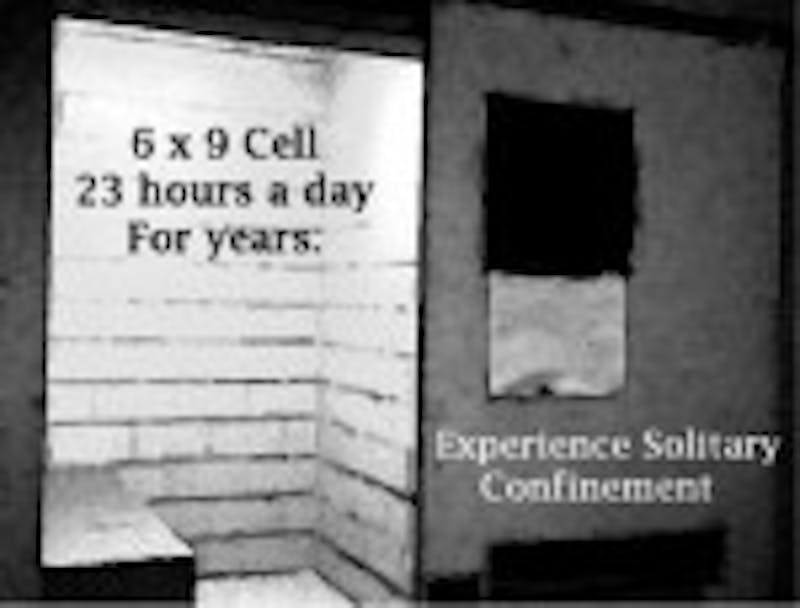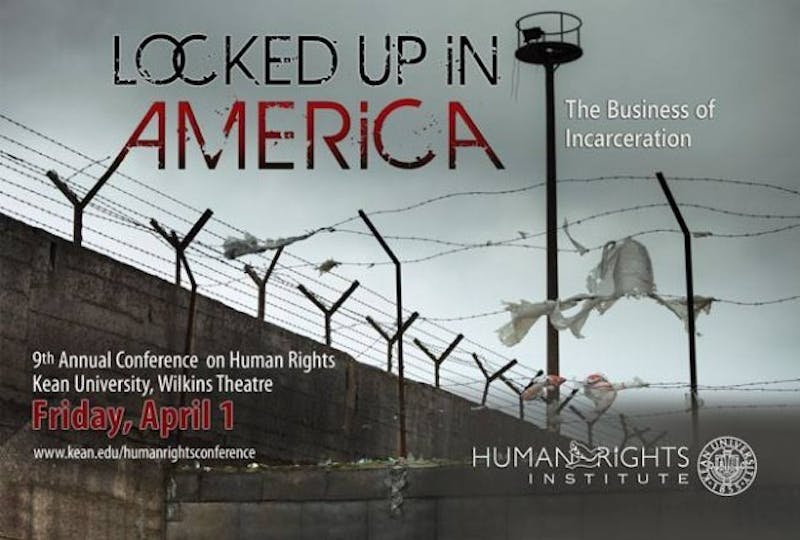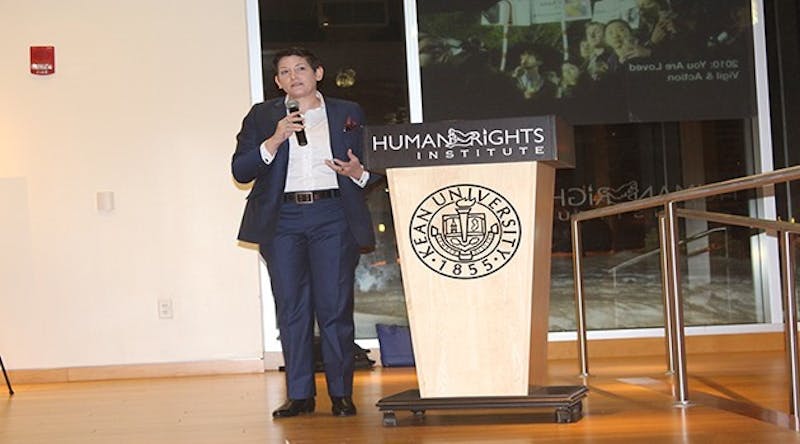On Wednesday, March 30, 2016, at 6:30 p.m., Human Rights Book Club (HRBC) hosted an iIntimate discussion surrounding Criptiques, a groundbreaking collection of essays by disabled authors.
The text thoroughly analyzes the often overlooked, provocative sides of disability including gender, sexuality, disability/crip culture, identity and ableism. Janice Kroposky provided the opening remarks and then let the conversation take took a life of its own.
The Human Rights Institute (HRI) at Kean University broadens the university's longstanding efforts to promote the awareness of human rights issues and violations across the globe. A fairly new and innovative part of the HRI is theHuman Rights Book ClubHRBC. Beginning just last year, this book club focuseds on works that highlight human rights issues that plague our world daily.
Selections for this spring's meetings were chosen in collaboration with photojournalist Syd London. The book club meetings create an atmosphere where student, professors, professionals, and anyone else can have a thought-provoking discourse about these very important issues.
The Criptiques meeting was attended by professors, students, guest speakers, friends and family. Among them was Dr. Julia Nevarez, Ccoordinator for the B.A. and M.A. in Sociology and& Social Justice programs at Kean University. She began the conversation by sharing her opinion.
She states, “In reading this one cannot help but wonder about the rich compilation of ideas and perspectives that have flourished from this.”
Another attendee wasKay Ulanday Barrett. He spoke on his experience navigating life as a disabled transgender mixed brown queer in the U.S. with struggle resistance and laughter. Throughout his life Kay has made a name for himself as a multi-talented, artist, poet, performer, advocate and educator.
He has been a featured speaker globally, received numerous honors, facilitated workshops, presented keynotes, had multiple publications, and contributed to panels with various social justice communities. Using his talents, expertise and passion, Kay turns art into action.
He shares his vision for Criptiqies, stating “...so what I did for this piece was I created an essay and then I excerpted journal entries as well as quotes from people who I felt really uplifted the experience of being intersectional. The questions I have, and that I pose in this essay, are questions of authenticity.”
The notion of intersectionality is a key concept when looking at someone’s overall life experience. Intersectionality is essentially a life lived in simultaneity. It is the summation of all the social categories that make up someoone’s perspective,/context (such as disability, sexual orientation, gender identity, race, class, age, religion etcct.). This can be problematic when society allows these differences to become divisors among the community.
Kay shares what his definition of intersectionality is.
He states, “So when I say intersectional that means I’m living multiple lives, multiple communities at any given moment depending on my cultural context. So when I go to the store some people will see me as brown, when I go to the Medicaid office, some people will see me as transgender. Right, aAll of that operating at once. Depending on where I am on the train or bus people will read me as disabled as well so I just wanted to identify that all those things are happening at once.”
Frequently, depending on what particular groups someone might belong to, their intersectionality can and will create compounding disadvantage. Consequently, their perspective is that of someone living and surviving constantly at the intersections.
Kay continues, “I live in a world where it’s understood by the mainstream LGBTQ and straight community that my masculinity is compromised and dehumanized by being disabled, by being a person of color, by growing up poor.”
Having a disability is just one part of someone’s identity, however often times society struggles with seeing it that way. Nevarez shared a quote by -- that aptly describes this very idea.
She states, “The average non-disabled person, and frequently even disabled people who’ve had limited or no exposure to disability rights theory or disability culture, does not understand disability beyond something that happens to other people, thereby rendering them tragic objects of pity, scorn, and charity.”
At the risk of oversimplifying it, when looked a fundamentally, a disability is simply a difference; it is not something that requires fixing or curing, but consideration and inclusion. If society were was designed in a way that did not place them on the margins, their differences in ability would not be seen as problematic. But because society is generally conducive to a very narrow definition of a person, modifications are necessary. Consequently, disability is interpreted as something that needs fixing.
He Kay states, “If we could debunk the myth around reciprocity, like I give you $5 dollars, you give me $5 dollars, we’re all equal. Because what happens ifs somebody can’t?””
Like the disabled, homosexuals are also pressured to change who they are to become more like the rigid model of man. They face a lot of hardship, discrimination and prejudice.
Kay states, “I [was] politically involved myself as a teen and as a queer brown person facing violence in harsh gender normative conditioning. There was no room for a queer body in my upbringing., I had to alter… mores of the gender binary just to create a masculinity that was kind of accepted. I wore lipstick then baggy men’s clothes., I had long hair but wore a baseball and fitted caps. A transgender body like mine is pressed to conform, one has to change ultimately who they are in every aspect to assure safety.”
Much like homosexuality, gender identity is something people struggle to understand and accept. Kay’s pronouns are he, him and his. In the beginning of one particular article, he verbalizes this experience of being a transgender man.
He states, “…Him. Hhe’s a man. He’s a transgender man, trans. Hhis gender markers are female on every application and contract. The law directly discredits his spirit.”
Gender identity is also compromised when masculinity is called into question. In a male dominated world, masculinity is seen as referring to a very particular expression of a person. Being a man has very concrete and unyielding parameters that are not considerate of the many ways humanity presents itself.
Kay states, “Men apparently face no hardships, but what does it mean to be transgender and disabled then? Where hardship and survival are uncanny landmarks of experience. ”
Kay correlates disability with racism, sharing how they are both substantial forms of oppression.
He states, “The same pity and savior complex entrenched in ableism feels similar to the experience of shaming perpetuated by the United States racism. Racism teaches us that black indigenous people of color can be fixed, be more anglo, act more white, speak a specific way, act however is perceived as white and then be valid human beings in the mainstream. Ableism expects people who are disabled to change their bodies for a system that deems their bodies not real, not valid.”
This is critical because this means a significant portion of the population suffers because of their phenotype or ability.
He Kay goes on to say, “Both systems demeanizedemonize people for who they are, both systems are founded in demanding people change without asking mainstream institutions to change; blame is defaulted on people of color and the disabled community. And instead of honoring difference we are asked to assimilate. Supposedly this is to help us but it only inevitable erases who we are and diminishes the experiences we face. Then the brown body, the transgender body, the disabled body is my spirit that has no model for existence.” How can a person thrive in a society that deems their entire being unnecessary or impartial?.
“Certainly resilience is the buzzword in each of the marginalized communities to which I belong but make no mistake, there is havoc when this is a constant way of living.” Society can be exclusionary in both subtle and enormous ways. In form it takes, it is ubiquitous and requires tremendous conscious and consistent effort to combat.
Kay states, “In public spheres I am constantly under question, ‘Aam I real?’ What exactly does it mean to live everyday as an accusation, a denunciation, a packed world where accountability of your life is always in question? When honor and intimacy are a constant ache constant negotiation. Where you’re very breathing is over simplified as a disturbance?”
These are the harsh realities of people who have attributes undervalued by society; acceptance and consideration are commodities reserved for those who are everything that they aren’t.
“You know, it’s the idea of eugenics, so we’re sizing up data about who is a worthy human,.” Kay stated.
These stigmas and judgements about one another ironically make us intolerant in one of the most diverse countries in the world. Then, should we individuals reach some point of inclusion where people are treated equally, people consider it a tremendous feat on their part instead of a basic human right. This is why it’s important to create a culture that recognizes humanity as the broad range of expressions and experiences that it is.
Just one of the many selections within book club, Criptiques sheds light on the lived experiences and personal insights of those within the disabled community.
Nevarez states, “These essays mostly contributed to providing a voice for the disabled community.”
It is important for students, as future leaders, to learn how an entire demographic experiences the world outside of their perception. Book club is just a great way to get students involved and discussing very real issues.


